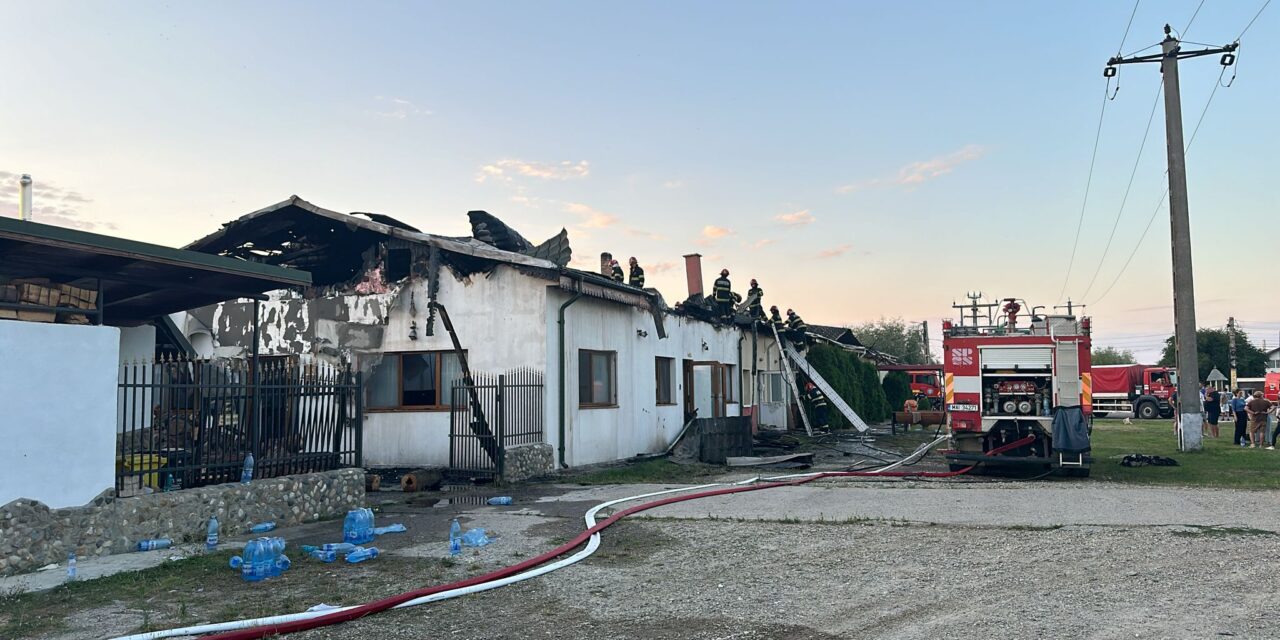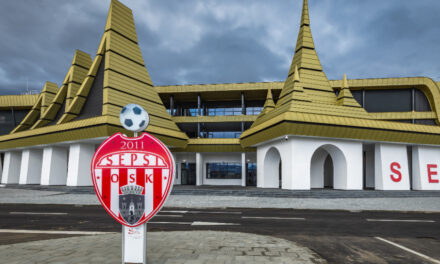The destruction of the building also endangered Hungarian education, and a collection was started for its reconstruction.
Only the walls remained of the Hungarian house in the Trunk settlement in Csángóföld that burned down on Sunday, in which 55 local Csángó children received Hungarian language education.
The Moldavian Csángómagyarok Szövetsége (MCsMSz) has launched a collection for the restoration and reconstruction of the building bought and renovated with the support of the Hungarian government in 2019, said László Pogár, the president of the Csángószövetzen.
In the village of Trunk (Galbeni), belonging to the village of Ferdinándújfalu (Nicolae Balcescu) in Bákó county, the fire broke out at around 3:00 p.m. on Sunday in the local community center with a common fire wall adjacent to the Hungarian house. Although the firefighters quickly arrived on the scene with large forces, they were unable to prevent it from spreading to the Hungarian house, this building was also completely burned down, only the walls remained - informed László Pogár.
The president of the Csángó association stated: the building was modernly equipped, it was purchased and renovated in 2019 with the support of the Hungarian government.
A total of 55 local Csangó children studied Hungarian in the property. In one of its rooms, kindergarten education in Hungarian took place in the daycare system within the framework of associations, the other was the location of the afternoon Hungarian education program for schoolchildren, while the kitchen was the location of the free catering program. Three teachers of the educational program lived in the third room of the property.
László Pogár said that one of the teachers noticed the fire in the local community center and informed the firefighters. Only the electronic devices - computers, smart board - were saved from the Hungarian house, the entire furniture was lost. The value of the damage is not yet known, but it is significant, the total area of the two buildings is 600 square meters.
The damage assessment is still ongoing, whether the remaining part of the Hungarian house can be saved or whether it must be demolished will be determined after a static analysis, said Pogár.
The cause of the fire is not yet known, a wedding was taking place in the community center on Saturday night, and part of the wedding party was also present on Sunday afternoon when the fire broke out.
The burning down of the Hungarian house also endangers Hungarian-language education in the settlement, so far it is not known where the education program can start again in the new academic year starting on September 9. Until the Hungarian house is rebuilt, a temporary solution must be found, which is made difficult by the fact that there is no house to rent in the settlement, and it is uncertain whether the new village administration will allow the local school building to be used for this purpose.
There is no school education in Trunk anymore, only kindergarten education is in Romanian, according to the practice in Csangóföld, the local children of school age study in Romanian and go to school in the center of the village, Ferdinándújfalu, where they are transported by school bus. The burnt Hungarian house was also a kind of spiritual center of the settlement.
The MCsMSz already started a collection on Sunday evening for the restoration of the building, donations are expected from Hungary to the following account number: 11708001-20564287 (OTP Bank Magyarország).
Donations can also be made to the Romanian bank accounts published on the community page of the Csangó association, and local entrepreneurs have also offered their help for the reconstruction.
Trunk, belonging to Ferdinándújfalu village in Moldavian Bákó county, is located 15 kilometers from the county seat, Bákó, on the right bank of the Szeret river. The settlement has about 1,200 inhabitants, according to previous estimates, the majority of them are of Hungarian nationality.
The Association of Moldavian Csángo Magyars operates the Hungarian-language education program in 35 settlements in Bákó County with the support of the Hungarian government. The number of participating Csángó children ranges from 15 to 100 per village.
MTI
Cover image: Only the walls remain from the burnt Hungarian house on Trunk in Csangóföld Source: Facebook/Association of Moldavian Csángó Hungarians













